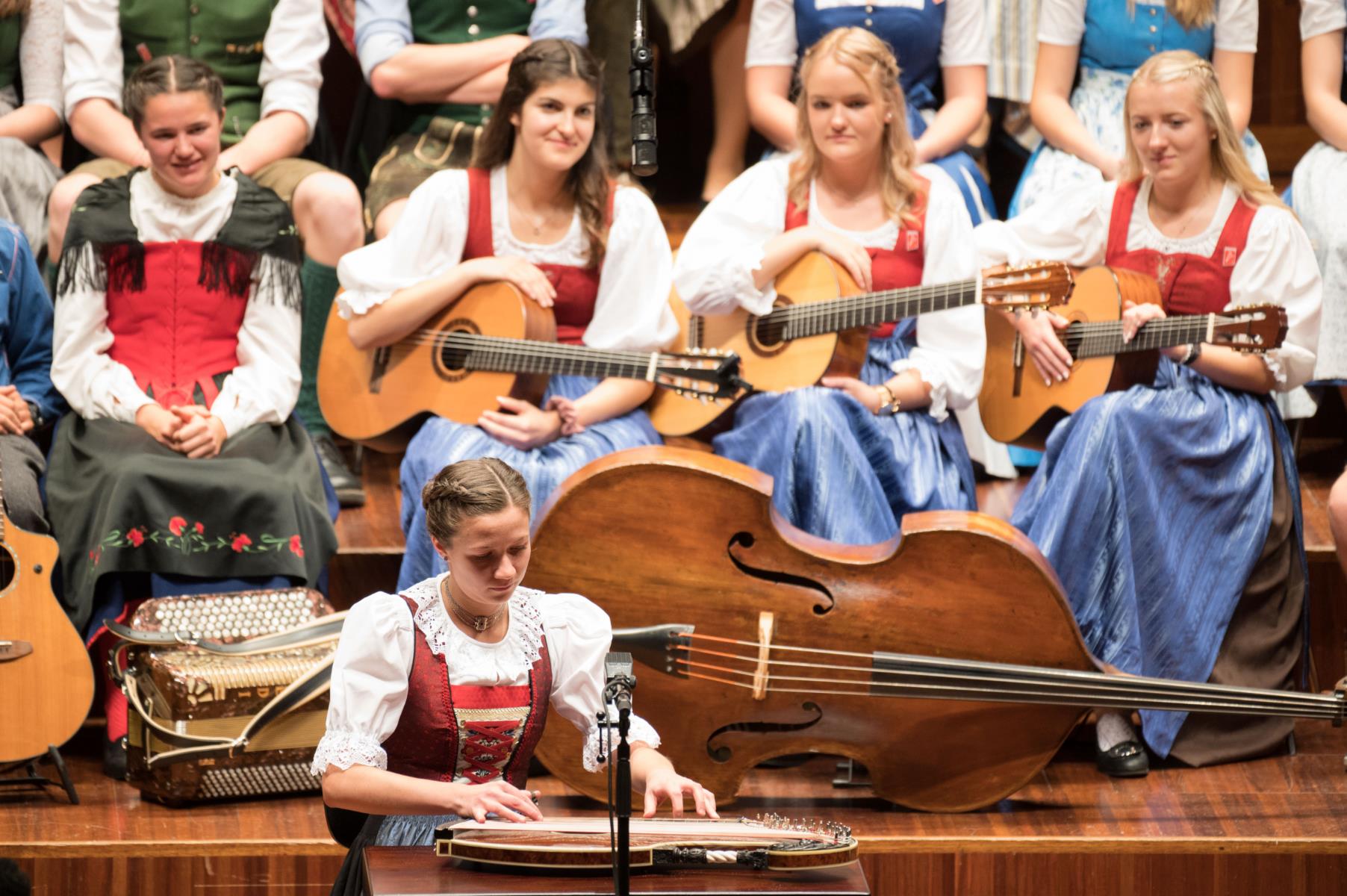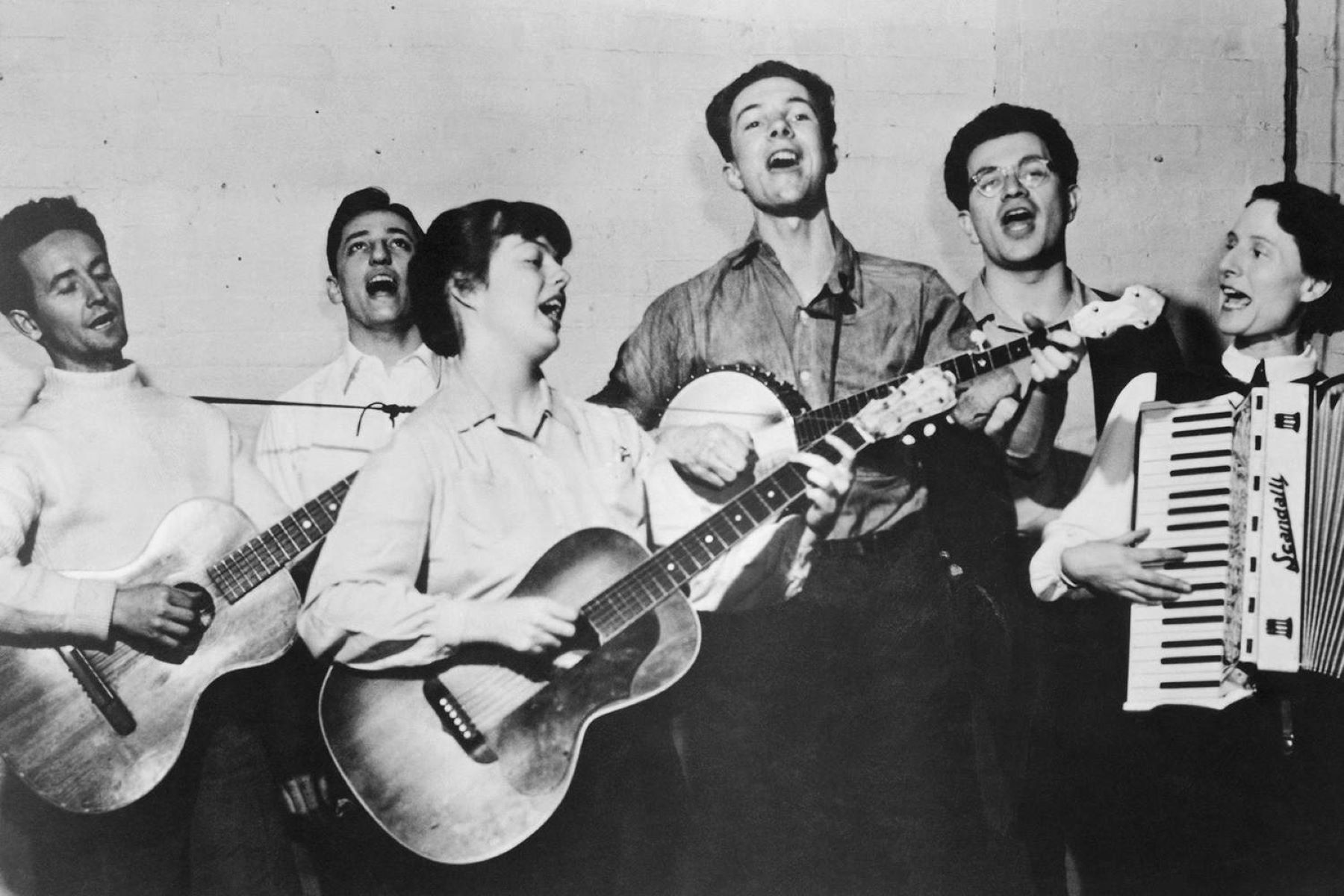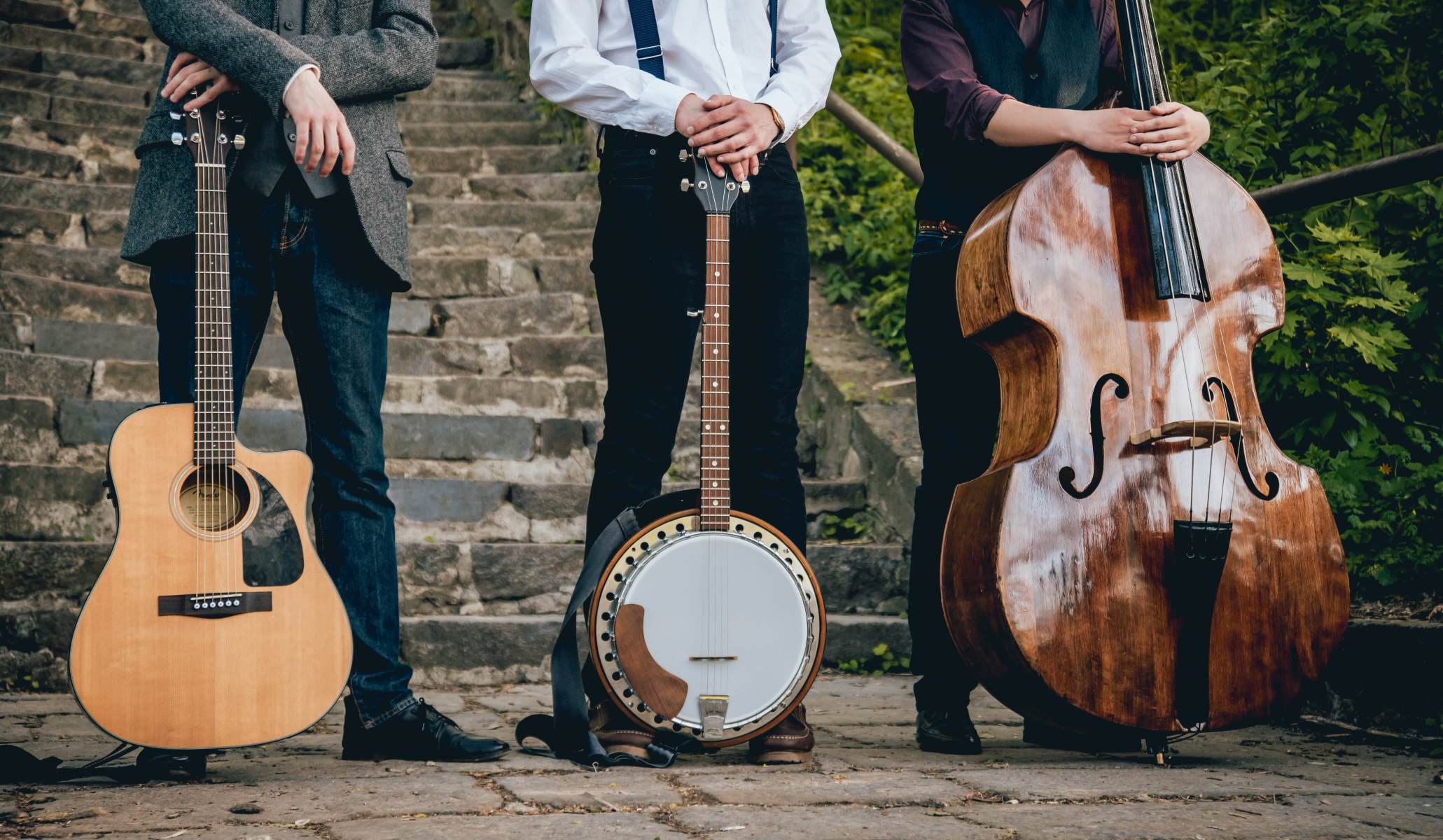

Folk
What Is Folk Means
Published: November 14, 2023
Discover the meaning of "folk" and its significance in culture, traditions, and music. Explore the rich history and diverse expressions of this enduring cultural phenomenon.
(Many of the links in this article redirect to a specific reviewed product. Your purchase of these products through affiliate links helps to generate commission for AudioLover.com, at no extra cost. Learn more)
Table of Contents
Introduction
Welcome to the enchanting world of folk culture. Deeply rooted in tradition and passed down from generation to generation, folk culture is a vibrant tapestry that encompasses various aspects of human expression, including music, dance, crafts, storytelling, and so much more. This article aims to provide a comprehensive exploration of what folk means, shedding light on its historical context, characteristics, regional variations, the impact of globalization, and efforts to preserve and revive folk culture.
Folk culture can be defined as the artistic, intellectual, and social heritage of a particular group or community. It embodies the customs, beliefs, rituals, and practices that have been nurtured and cherished over time. Unlike mainstream or popular culture, which is often shaped by mass media and commercial influences, folk culture is deeply ingrained in the daily lives of ordinary people. It serves as a representation of their identity, values, and collective experiences.
Throughout history, folk culture has played a pivotal role in shaping societies and providing a sense of belonging. It serves as a powerful medium for transmitting knowledge, preserving traditions, and fostering social cohesion. From ancient civilizations to indigenous communities, folk culture has acted as a cultural adhesive, binding communities together through shared customs and rituals.
The characteristics of folk culture are diverse and multifaceted. One of its defining features is its oral tradition, with stories, songs, and legends being passed down through generations by word of mouth. This oral transmission not only preserves cultural heritage but also allows for adaptations and reinterpretations that reflect the changing times.
Folk culture is deeply connected to the local environment and the natural world. It often celebrates rural life, agricultural practices, and the cycles of nature. This connection can be seen in folk art, which is often inspired by the natural surroundings and reflects the creativity and craftsmanship of the community.
Another important aspect of folk culture is its communal nature. Folk traditions are often participatory, involving the entire community in celebrations, dances, and rituals. This creates a sense of unity and strengthens social bonds.
As we delve into the rich tapestry of folk culture, we will explore the regional variations and unique folk traditions found across the globe. We will also examine the challenges that folk culture faces in the modern world, particularly in the face of globalization. However, amidst these challenges, there are numerous efforts being made to preserve and revive folk culture, ensuring that these invaluable traditions continue to thrive.
So, buckle up and get ready for a journey into the captivating world of folk culture. Prepare to be enchanted, inspired, and enlightened as we uncover the beauty and significance of what folk means.
Definition of Folk
The term “folk” encompasses a broad range of meanings, as it can refer to both the people and their culture. When it comes to the context of folk culture, it is important to understand the various interpretations and definitions associated with it.
At its core, folk culture refers to the traditional and indigenous expressions of a particular group or community. These expressions can manifest in various forms, including music, dance, art, crafts, storytelling, folk medicine, and religious practices. Folk culture is deeply rooted in the everyday lives of people, reflecting their beliefs, values, and shared experiences.
One way to define folk is through the concept of “folklore,” which encompasses the traditional customs, beliefs, and practices of a particular group. Folklore is passed down orally or through demonstration, often with slight variations that arise from regional or individual interpretations.
In a broader sense, folk culture can also be seen as a manifestation of the collective identity and heritage of a community. It represents the wisdom, creativity, and resilience that has been fostered over generations. It is a reflection of the unique cultural heritage that distinguishes one group from another.
It is important to note that the term “folk” does not necessarily imply a static or unchanging culture. Folk culture is dynamic and evolves alongside the society and individuals who practice it. It adapts to new circumstances, incorporates external influences, and reflects the changing values and aspirations of the community.
Folk culture is often associated with rural or traditional societies, but it can also exist within urban settings. It can be found among indigenous communities, ethnic groups, and even subcultures within larger societies. The defining factor is the preservation of traditional values, practices, and expressions that have a communal significance.
Overall, the definition of folk is multifaceted, encompassing both the people and their cultural practices. It is a testament to the resilience and richness of human expression, preserving the essence of communities and their collective heritage.
Historical Context
To understand the significance of folk culture, it is essential to explore its historical context. Folk traditions have deep roots that extend back centuries, shaped by historical events, societal changes, and cultural interactions.
The origins of folk culture can be traced back to ancient civilizations, where oral traditions served as a means of preserving and transmitting knowledge from one generation to the next. In preliterate societies, stories, myths, and legends were passed down through spoken word, allowing communities to maintain a connection with their past.
During the Middle Ages, the rise of feudalism and the dominance of the church played a significant role in shaping folk culture. As peasants and serfs worked the land, their daily lives revolved around agricultural practices and seasonal cycles. Folklore and traditions emerged around these activities, celebrating harvests, fertility, and the changing of seasons.
With the advent of the Renaissance and the Age of Enlightenment, there was a shift in societal values, placing a greater emphasis on reason and scientific inquiry. This period also witnessed the rise of nationalism and the idea of a unified nation-state. However, even in the face of these changes, folk culture continued to thrive in rural communities, serving as a source of identity and resistance against dominant cultural forces.
The industrial revolution, which began in the late 18th century, brought significant changes to societies across the globe. As people migrated from rural areas to growing urban centers, traditional ways of life were disrupted. However, even in urban environments, aspects of folk culture persisted as communities sought to maintain a sense of connection to their roots.
The emergence of modern mass media, such as radio, television, and the internet, has had both positive and negative impacts on folk culture. On one hand, it has facilitated the sharing and dissemination of folk traditions to a wider audience. On the other hand, it has also contributed to the erosion of traditional practices, as popular culture and commercial influences become more prevalent.
Globalization, with its interconnectedness and homogenizing tendencies, poses both challenges and opportunities for folk culture. The free flow of ideas, people, and goods across borders has led to the borrowing and fusion of cultural elements. While this can result in the enrichment and revitalization of folk traditions, it can also lead to the dilution or loss of unique cultural practices.
In recent years, there has been a renewed interest in preserving and reviving folk culture. Efforts are being made to document and safeguard traditional practices, promote cultural exchange, and empower communities in preserving their heritage. Through festivals, workshops, and educational initiatives, folk culture is being celebrated and passed on to future generations.
By understanding the historical context in which folk culture has evolved, we can gain a deeper appreciation for its significance and resilience. It serves as a testament to the enduring power of cultural traditions, connecting us to our roots and reminding us of the diversity and beauty of human expression.
Characteristics of Folk Culture
Folk culture is characterized by a unique set of features that distinguish it from mainstream or popular culture. These characteristics provide insight into the essence of folk traditions and why they hold such significance. Let’s explore some of the key characteristics of folk culture:
1. Oral Tradition: One central aspect of folk culture is its reliance on oral transmission. Stories, songs, and traditions are passed down through generations, ensuring the preservation of cultural heritage. This oral tradition allows for variations and adaptations, reflecting the evolving nature of folk culture.
2. Communal Participation: Folk traditions often emphasize community involvement. Whether it’s through festive celebrations, dances, or rituals, folk culture seeks to foster a sense of unity and belonging among its participants. This communal participation creates a shared experience and strengthens social bonds.
3. Connection to Nature: Folk culture is deeply intertwined with the natural world. It celebrates the rhythms of the seasons, agricultural practices, and the relationship between humans and the environment. Folk art and crafts often draw inspiration from nature, showcasing the importance of the natural surroundings in the cultural identity.
4. Regional and Local Identity: Folk culture is deeply rooted in specific regions and localities. It reflects the unique traditions, customs, and dialects of a particular geographic area. These regional variations contribute to the diversity and richness of folk culture.
5. Creativity and Adaptability: Folk culture is a testament to human creativity and adaptability. It often incorporates elements from different cultures and time periods, showcasing the fusion and evolution of folk traditions over time. Folk artists and practitioners have the freedom to add their personal touch, resulting in a dynamic and ever-changing cultural landscape.
6. Ritual and Symbolism: Rituals and symbolism play a significant role in folk culture. From religious ceremonies to rites of passage, folk traditions often have deep-rooted symbolic meanings. These rituals serve as a way to connect individuals to their cultural heritage and provide a sense of continuity and belonging.
7. Handcrafted Traditions: Folk culture places great value on handmade and traditional craftsmanship. Whether it’s pottery, weaving, woodwork, or embroidery, folk art often showcases the skill and craftsmanship of the community. These handcrafted traditions not only preserve cultural techniques but also represent a connection to ancestral knowledge.
8. Resilience in the Face of Change: Despite the challenges posed by modernization and globalization, folk culture has shown remarkable resilience. It has adapted to changing times while preserving its core values and traditions. Folk culture continues to thrive through the efforts of communities and individuals dedicated to its preservation and revival.
These characteristics of folk culture provide a glimpse into the rich tapestry of traditions, expressions, and values that make up this vibrant aspect of human heritage. Through its distinct features, folk culture continues to captivate and inspire, showcasing the ingenuity, creativity, and resilience of communities around the world.
Folk Traditions in Different Regions
Folk culture is not homogenous but rather a diverse tapestry that varies from region to region. Across the globe, different communities have their own unique folk traditions that reflect their cultural heritage, beliefs, and customs. Let’s explore some fascinating examples of folk traditions in different regions:
1. Celtic Folklore (Ireland and Scotland): The Celtic traditions of Ireland and Scotland are rich with ancient folklore and mythical tales. From leprechauns and fairies to giants and banshees, these stories have been passed down for generations, capturing the imagination and enchanting people around the world.
2. Flamenco (Andalusia, Spain): Flamenco is a captivating art form that originated in the Andalusian region of Spain. Combining intense guitar playing, passionate singing, and powerful dance, it embodies the raw emotions and vibrant spirit of the Spanish culture. Flamenco is a testament to the resilience and passion of the Andalusian people.
3. Hula (Hawaii, Pacific Islands): Hula is a traditional dance form from the beautiful Pacific islands of Hawaii. With graceful movements and mesmerizing chants, hula narrates the stories of Hawaiian mythology and celebrates the connection between the people and the natural world. It is a vital part of Hawaiian culture and serves as a way to preserve their heritage.
4. Carnival (Brazil): Carnival in Brazil is a spectacular display of music, dance, and elaborate costumes. It is a vibrant celebration that takes place before the Christian season of Lent. Carnival is deeply rooted in Afro-Brazilian traditions and showcases the joyful spirit, African rhythms, and cultural diversity of Brazil.
5. Maori Haka (New Zealand): The Maori people of New Zealand have a powerful cultural tradition known as the Haka. This ancestral war dance serves as a symbol of strength, unity, and defiance. The Haka has gained international recognition through performances by the All Blacks, the country’s national rugby team, before matches.
6. Pizzica Tarantata (Salento, Italy): Pizzica Tarantata is a traditional dance and music form from the Salento region in southern Italy. It has roots in ancient healing practices and is believed to cure the bite of the tarantula spider. The lively rhythms and frenetic movements of Pizzica Tarantata are a testament to the resilience and passion of the people of Salento.
7. Native American Powwow (North America): Powwows are gatherings of Native American communities that celebrate their cultural heritage through music, dance, and traditional regalia. Each tribe has its own unique dances, songs, and rituals, connecting the present generation to their ancestors and preserving Native American traditions.
8. Yatra (Himalayan Region, Nepal): Yatra is a religious and cultural festival celebrated in the Himalayan region of Nepal. It involves processions, masked dances, and cultural performances that pay homage to the deities and commemorate mythological events. The Yatra festival is a vivid display of Nepalese traditions and spirituality.
These are just a few examples of the vast array of folk traditions found across different regions. Each tradition is a testimony to the unique cultural heritage and the resilience of communities in preserving their folk culture. Exploring and appreciating these diverse traditions allows us to better understand the richness and diversity of human expression.
Impact of Globalization on Folk Culture
Globalization, with its interconnectedness and rapid dissemination of information and ideas, has both positive and negative impacts on folk culture. While it has the potential to facilitate cultural exchange and appreciation, it also poses significant challenges to the survival and authenticity of folk traditions. Let’s explore the impact of globalization on folk culture:
1. Erosion of Traditional Practices: Globalization has led to the homogenization of cultures, as mainstream and popular culture from dominant societies often overshadow traditional folk practices. Younger generations may be more inclined towards global trends, resulting in a decline in the transmission of traditional knowledge and practices to future generations.
2. Cultural Appropriation: With increased global connectivity, certain elements of folk culture are at risk of being appropriated or commodified without proper understanding or respect for their cultural significance. This can lead to the dilution or distortion of traditional practices, depriving them of their authenticity and reducing cultural traditions to mere trends or tourist attractions.
3. Displacement and Migration: Migration, whether due to economic factors or conflict, can disrupt the continuity of folk culture within communities. The loss of ancestral lands, displacement, and assimilation into new cultures can result in the erosion of traditions and the adoption of mainstream practices.
4. Hybridization and Adaptation: On the positive side, globalization has also led to the hybridization and adaptation of folk traditions. Cultural exchange and exposure to different influences can allow for the revitalization and reinterpretation of folk culture, resulting in innovative expressions that incorporate new elements while retaining their core essence.
5. Access to Information and Resources: Globalization has provided greater access to information and resources, enabling communities to explore and learn from other folk traditions around the world. This exchange of knowledge can inspire new ideas, encourage collaborations, and foster a greater appreciation for the diversity of folk culture.
6. Revival and Preservation Efforts: In response to the challenges posed by globalization, there has been a growing movement to preserve and revive folk culture. Cultural organizations, grassroots initiatives, and individuals are actively engaged in documenting, revitalizing, and promoting traditional practices, ensuring that they continue to thrive amidst the changing cultural landscape.
7. Increased Visibility and Recognition: Despite the potential threats, globalization has also provided platforms for greater visibility and recognition of folk culture. Through festivals, exhibitions, digital platforms, and tourism, folk traditions have gained a broader audience, allowing for increased appreciation and understanding of their cultural significance.
8. Cultural Exchange and Dialogue: Globalization has created opportunities for cultural exchange and dialogue. Interactions between different cultures can lead to the enrichment and cross-pollination of folk traditions. This exchange fosters understanding, respect, and collaboration, helping to break down stereotypes and promote cultural diversity.
While the impact of globalization on folk culture may pose challenges, it also presents opportunities for preservation, innovation, and cross-cultural understanding. It is crucial to strike a balance between embracing globalization’s positive aspects while ensuring the authenticity and integrity of folk traditions are safeguarded for future generations.
Preservation and Revival of Folk Culture
As the forces of modernization and globalization continue to shape the cultural landscape, efforts to preserve and revive folk culture have become increasingly essential. Recognizing the importance of maintaining cultural diversity and heritage, individuals, communities, and organizations are actively engaged in various initiatives to ensure the longevity and vibrancy of folk traditions. Here are some key approaches to preserving and reviving folk culture:
1. Documentation and Archiving: Documenting and archiving folk traditions is crucial for their preservation. Recording oral histories, songs, dances, rituals, and other folk practices ensures that they are not lost to time. The use of audiovisual technology, interviews with community elders, and the creation of digital archives are valuable tools in this effort.
2. Cultural Education and Awareness: Education plays a vital role in preserving and reviving folk culture. Schools, community centers, and cultural institutions can integrate folk traditions into curricula and organize workshops and seminars to raise awareness and appreciation among younger generations. This empowers individuals with knowledge about their cultural heritage and fosters a sense of pride and connection to tradition.
3. Community Empowerment: Empowering communities to take ownership and pride in their folk traditions is essential for their preservation. Encouraging community-led initiatives, providing resources and support, and creating platforms for folk artists and practitioners to showcase their work are ways to ensure the continued vitality of folk culture.
4. Festivals and Cultural Events: Organizing festivals and cultural events dedicated to folk traditions promotes their visibility and creates spaces for communities to share and celebrate their heritage. These gatherings serve as platforms for performances, exhibitions, workshops, and cultural exchange, fostering a sense of community and encouraging the transmission of folk traditions.
5. Collaboration and Interdisciplinary Approaches: Collaboration between different stakeholders, such as artists, scholars, and community members, can foster innovative approaches to the preservation and revival of folk culture. Interdisciplinary research, collaborations between traditional and contemporary artists, and the involvement of multiple generations in the creative process can ensure the relevance and continuity of traditional practices.
6. Cultural Tourism: Responsible cultural tourism can create economic opportunities while contributing to the preservation of folk culture. Supporting community-based tourism initiatives that prioritize authenticity, respect, and sustainability allows visitors to experience and appreciate folk traditions firsthand. This generates income for communities and encourages the continuation of traditional practices.
7. International Collaboration and Exchange: Engaging in international collaborations and cultural exchanges expands the horizons of folk culture. Sharing knowledge, performances, and experiences with communities from different countries or regions enriches the understanding and appreciation of diverse traditions. This cross-cultural dialogue can inspire new ideas, encourage innovations, and foster global connections.
8. Government Support and Policies: Governments have a crucial role to play in preserving and reviving folk culture. Supporting cultural heritage institutions, creating funding frameworks for community-led initiatives, implementing policies that safeguard intangible cultural heritage, and integrating folk traditions into cultural policies contribute to a conducive environment for the preservation and revival of folk culture.
By employing these approaches and recognizing the intrinsic value of folk culture, we can ensure that these rich and diverse traditions continue to thrive. Preserving and reviving folk culture allows us to celebrate cultural diversity, foster connections between generations, and maintain a vital link to our shared heritage.
Conclusion
Folk culture is a testament to the resilience, creativity, and enduring power of human expression. From ancient civilizations to modern communities, folk traditions have played a significant role in shaping identities, fostering social cohesion, and preserving cultural heritage. Despite the challenges posed by globalization and modernization, there is a growing recognition of the importance of preserving and reviving folk culture.
Throughout this article, we have explored the multifaceted nature of folk culture. We have defined folk as the traditional expressions and practices of a particular group or community, encompassing music, dance, crafts, storytelling, and more. We have examined the historical context of folk culture, understanding its origins, evolution, and relevance in different time periods.
Characteristics of folk culture, such as its oral tradition, communal participation, connection to nature, and regional identity, paint a vivid picture of the diversity and richness that it encapsulates. We have also acknowledged the impact of globalization on folk culture, recognizing the erosion of traditional practices, but also highlighting the potential for hybridization, adaptation, and increased visibility.
Preserving and reviving folk culture requires collective effort and a variety of approaches. Through documentation, cultural education, community empowerment, festivals, collaborations, and government support, folk traditions can be safeguarded and passed down to future generations. These efforts ensure the continuity of folk culture, celebrating cultural diversity, fostering social cohesion, and providing a vital link to our collective heritage.
As we navigate the complexities of a globalized world, it is essential to recognize the value of folk culture and appreciate the beauty and significance it holds. By engaging in the preservation and revival of folk traditions, we contribute to the richness and diversity of the cultural tapestry that encompasses humanity.
So, let us cherish and celebrate the wonders of folk culture, for it is through this enchanting realm that we discover the timeless wisdom, breathtaking artistry, and profound connections that transcend time and boundaries.











